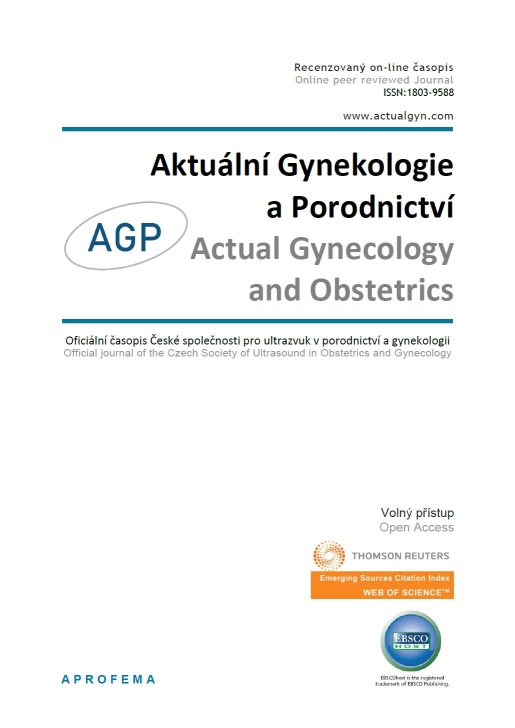











 Official publication of the Czech Society of Ultrasound in Obstetrics and Gynecology.
Official publication of the Czech Society of Ultrasound in Obstetrics and Gynecology.

Introduction: The premature rupture of membranes (PROM) in term pregnancy is not categorized separately in the Robson Classification. The aim of this study is to identify differences between parturiens who were admitted to the labor unit with PROM, spontaneous onset of labor (contractions) and induced labor.
Materials and methods: All parturients who delivered at our department were included. The data were obtained from medical records of patients from 1.1.2018 to 30.9.2019. The population of parturiens in term with one fetus in cephalic position was then selected and subdivided according to the cause of admission: spontaneous onset of labor (contractions), spontaneous rupture of membranes and induction of labor. Primiparas and multiparas without a history of cesarean section where evaluated separately.
Results: The frequency of cesarean section in the population of primiparas admitted to the labor unit with PROM was 14.7%, in those admitted with contractions was 8.0% (OR: 0.51, 95% CI: 0.37 – 0.70, p < 0.0001). In the population of parturiens with induced labor, the frequency of cesarean section was 20.7% (OR: 1.51, 95% CI: 1.08 – 2.12, p = 0.0156). Cesarean sections performed out of the indication “prolonged labor” represented 10.6% of all deliveries in the population of parturiens admitted with PROM, 5.4% in the population admitted with contractions (OR: 0.48, 95% CI: 0.33 – 0.71, p = 0.0002). In the population with induced labor those cesarean sections represented 5.4% of all deliveries, the difference was not statistically significant. In cesarean sections performed out of the indication “fetal hypoxia”, no significant difference was observed between populations with PROM and spontaneous onset of labor (3.6% vs 2.3%). Comparing to the population with induced labor (7.1%), the difference was statistically significant (OR: 2.03, 95% CI: 1.11 – 3.70, p = 0.0217). Similar results were obtained in the population of multiparas.
Conclusion: Different outcomes were recorded in the population of primiparas and multiparas with PROM. A separate category in the Robson Classification for those parturiens would be beneficial.